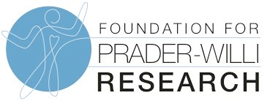 Sleep disorders are common in Prader-Willi syndrome (PWS). These are associated with central and obstructive apnea, disrupted sleep, and excessive daytime sleepiness. But why exactly do individuals with PWS have abnormal sleep patterns?
Sleep disorders are common in Prader-Willi syndrome (PWS). These are associated with central and obstructive apnea, disrupted sleep, and excessive daytime sleepiness. But why exactly do individuals with PWS have abnormal sleep patterns?
Dr. Janine LaSalle has uncovered an exciting new link between the missing genes in the PWS region of chromosome 15, and genes that control our circadian rhythms (i.e., our daily sleep-wake cycle). This intriguing discovery opens the way for new therapies to regulate sleep and metabolism in PWS, which Dr. LaSalle is currently investigating with support from FPWR. I recently spoke with Dr. LaSalle about her background, the current research in her lab, and her outlook on PWS.
The Facinating World of Epigenetics
Drawn to math and science in high school, Dr. LaSalle was a pre-med student at Randolph-Macon College until a summer research experience studying the disease, lupus, turned her on to the idea of pursuing a PhD in immunology. After obtaining her PhD at Harvard University, Dr. LaSalle was a postdoctoral researcher in the lab of Dr. Marc Lalande (another FPWR-supported researcher) at Harvard Medical School, switching fields to the area of epigenetics.
Epigenetics is the study of changes in gene expression (i.e., translation of genes into observable traits) that do not arise from changes in the sequence of DNA itself, but rather are due to changes in the chemistry surrounding the DNA molecules. The imprinting, or silencing, of the maternal genes in the PWS region is a textbook example illustrating the role of epigenetics. Dr. LaSalle found the ideas of epigenetics to be fascinating, that there is more to one’s destiny than simply the sequence of base pairs in one’s DNA, that it matters if certain genes come from one’s father or mother, and that certain genes are turned on an off through a process called methylation.
Observing Gene Expression 'In Action'
As a postdoc, Dr. LaSalle already began studying the epigenetics of Prader-Willi and Angelman syndromes. She has continued this focus as a faculty member at the University of California, Davis, where she is a Professor in the Department of Medical Microbiology and Immunology, and member of the UC Davis Genome Center and M.I.N.D. Institute. Dr. LaSalle’s lab currently studies the role of epigenetics in several neurodevelopmental disorders including Rett syndrome, PWS, Angelman syndrome, and autism. FPWR has supported Dr. LaSalle’s research in two grant cycles, providing key pilot funding that has been critical for obtaining the important initial scientific results that are required for a successful grant from the National Institute of Health (NIH). The hallmark of Dr. LaSalle’s research is observing the processes of gene expression “in action” in cells.
In one FPWR-supported study, Dr. LaSalle and her group investigated the detailed mechanisms of gene silencing and expression in the PWS/Angelman region of chromosome 15. They specifically studied the effect of a chemotherapy drug, topotecan, on the expression of the gene, UBE3A, which is one of the key deleted/silenced genes in Angelman Syndrome. In this work, Dr. LaSalle and her group highlighted the importance of molecular DNA+RNA structures called “R-loops” in the regulation of UBE3A’s expression. More recently, Dr. LaSalle and her lab have discovered an intriguing link between another key PWS-related gene, “116HG” (part of the SNORD116 gene), and circadian rhythms in a mouse model of PWS. Based on their experiments, Dr. LaSalle and her group find that the 116HG gene regulates the expression of other genes that control circadian rhythms and metabolism.
The lack of 116HG in PWS cells leads to a disruption of metabolic processes related to the sleep cycle, which may explain the sleep problems experienced by individuals with PWS. There may be broader implications as well, as Dr. LaSalle points out that the regulation of appetite (another major issue in PWS) may be linked to our circadian rhythms. What is very exciting is that the drug, rapamycin, may work to regulate the circadian-rhythm genes, in the absence of 116HG. Dr. LaSalle is currently testing this hypothesis on mice, with hopes of translating the therapy to humans.
Exciting Time in PWS Research
Dr. LaSalle has found it very inspiring to meet PWS families in person, and is looking forward to attending the IPWSO conference in Toronto this summer. She feels that it is a truly exciting time in PWS research, because there are many existing drugs that can be repurposed to treat PWS. The specific example that Dr. LaSalle is considering at the moment is rapamycin, a drug used to prevent organ transplant rejection, which she has been using (as described above) to address sleep disorders in PWS.
Outside of the lab, Dr. LaSalle stays busy keeping up with her two teenage sons. Her older son, a serious gymnast, just finished his junior year in high school, while her younger son, who is 13 years old, plays three sports. Needless to say, there are lots of afterschool sporting events to attend!








